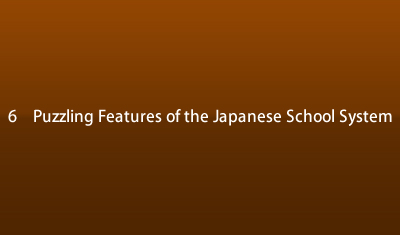 |
Q Why do many students attend cram schools?
A In the United States, a diploma from one of the elite universities such as Harvard, Yale, Princeton, etc. is regarded as a passport to success in society. Recently, competition has become stiff to get into high schools having a large number of graduates successfully entering these elite universities.
Various methods are employed to ensure success such as : hiring private tutors, having papers corrected through computer networks and facsimiles, and high schools holding free supplementary courses.
There was a time in Japan too, when people relied on private tutors, but private tutors could not cope with the intensifying entrance examination competition, giving rise to the flourishing of cram schools and places offering afterschool lessons.
Cram schools existed from before; however, they were limited to being supplementary courses for junior high school students under the prewar system to prepare them for their high school entrance examination. In only a matter of decades, cram schools grew into the greatest entrance examination industry seen today.
Japan's entrance examination weeds out applicants by a rote-learning type of written test. Special training is required to pass these tests. The standard education received at school alone is not enough to pass these difficult tests. This is where the cram schools come in to bring out the best of the students' ability through a series of texts containing .
questions prepared by the cram schools that are geared to pass the difficult entrance examination. With the exception of people who are naturally bright, the intensive lessons offered at cram schools for those who need just a little extra push bring good results drawing many students to these cram schools. It is said that 40% of elementary school students, 50% of junior high school students and 60% of high school students attend some kind of after-schoollessons and/or cram schools.



